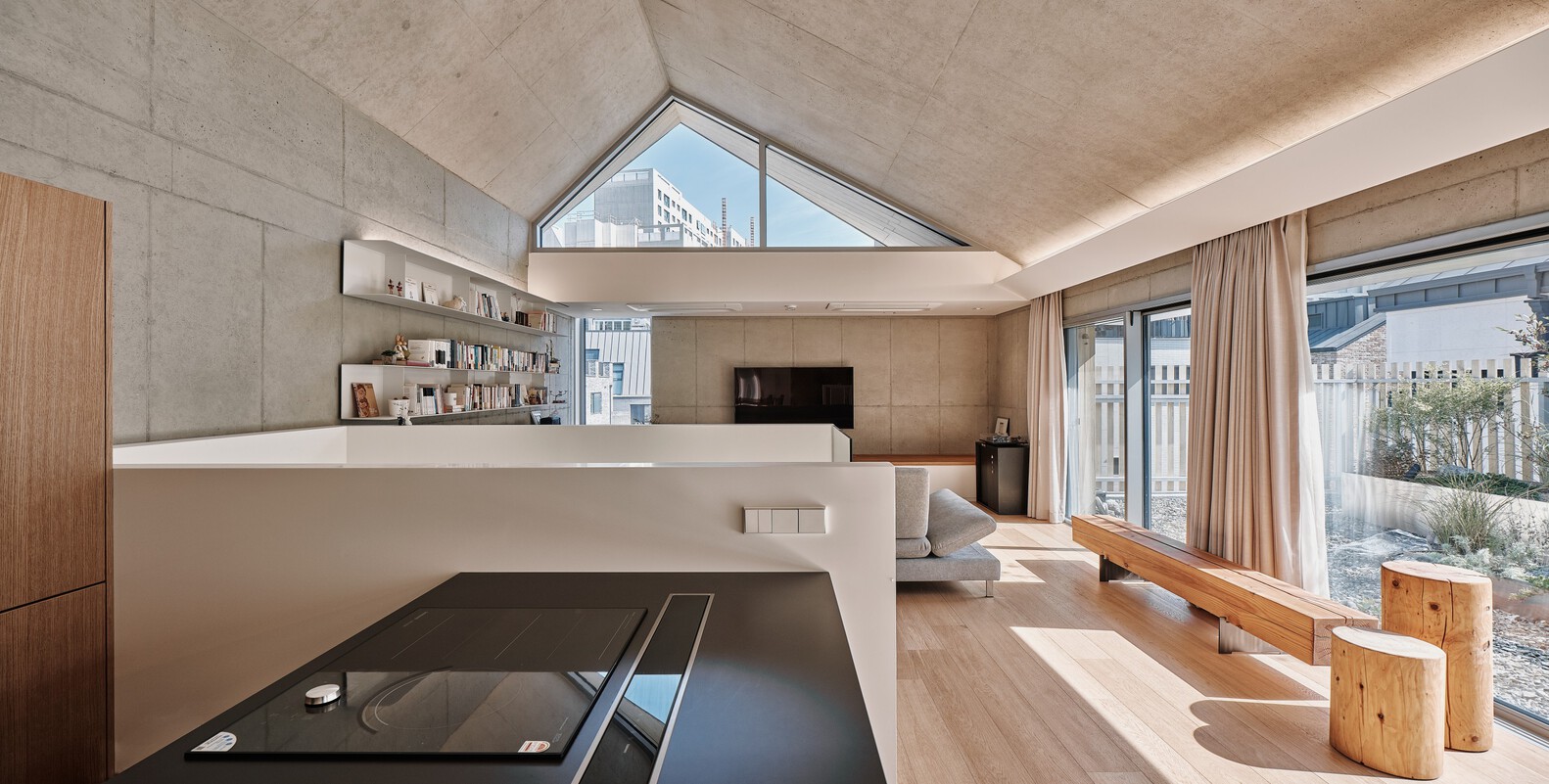Important Highlights
- Modern multi-unit living spaces provide the best of both worlds: community connectivity and isolation.
- Designing for buildings, empowerment of residents and the latest technologies help to create an ecologically sustainable equilibrium between privacy and socialization.
- The research shows that cultivating a sense of community can enhance the safety, well-being and overall satisfaction of residents.
- Residents have more freedom and satisfaction by applying practical, daily strategies to support their ideal retreat and engagement mix.
Why Multi-Unit Living Matters
In recent years, cities as well as suburbs have seen a rise in demand for apartments and condominiums. It’s not just about the convenience. People living in multi-unit communities are discovering lively communities that are interconnected and blend social activities with the privacy in private spaces. People naturally seek the feeling of belonging, whether it’s a wave to a friend on the street, a casual conversation on the rooftop or an event that is a community gathering in a lounge that is shared. As the world shifts towards urbanization and efficient land usage and development, these spaces are setting new standards for living in the modern world that allows residents to form lasting relationships and enjoy the comforts of the home they call.
The attraction of The Appeal luxury Uptown Chicago apartments For instance, it goes way beyond aesthetics and ease of access. These contemporary buildings are constructed to strike a equilibrium between lively amenities for shared use as well as private, intimate private spaces. Residents are able to host guests on their rooftop and take part in community events and find their tranquil refuge within sound-proofed walls. This constant dialogue between retreat and community is the primary reason for the appeal and increasing popularity of living in multi-unit options from all the way from coast to. At all levels, from small studios to penthouses people appreciate an atmosphere of connection and the ability to choose what and when to participate.
Knowing the Challenges
Finding a balance that is healthy between privacy and social interaction in shared spaces isn’t always easy. Although the proximity of neighbors can facilitate spontaneous connections however, it also can make it difficult to define privacy. Conversations, footsteps and the everyday noises can be heard through walls, transforming minor nuisances into serious issues when not dealt with thoughtfully. The communal spaces that are renowned by their energy and inclusiveness can inadvertently disrupt your private time or routines, particularly people with distinct schedules or sensitive to noise. Over half of those living in apartments see the noise and privacy issues as their top issues, highlighting the necessity of a proactive management approach and design.
However, a focus on privacy may have negatives. If doors are closed and people aren’t seen residents can feel lonely and may miss out on the social connections that come from having a connection with their neighbours. Numerous studies have proven that the absence of social interaction is linked to an increase in stress, a decrease in security, and worse health outcomes. Multi-unit communities that are flourishing recognize the importance of bridging gaps between residents. They accomplish this by establishing accessible spaces, and by organising events that encourage the bonds between residents. They also establish clearly defined guidelines for establishing limits. Respect for one another, open communication and flexibility are crucial to ensure well-being and an environment that is healthy for all.
Designing for Privacy and Connection
The foundation for successful multi-unit living lies in its layout. Modern architects are more attuned to residents’ psychological as well as practical requirements, creating buildings which are geared towards individual comfort and sharing experiences. The use of walls that are reinforced, doors with thick frames and double-pane windows maintain peace in homes and open-plan lounges, rooftop gardens, and multi-purpose gathering spaces promote organic interactions. The most efficient layouts typically have quiet zones and reading areas or even work-from home pods which offer privacy in the larger community. Incorporating clear, distinct private and communal zones can increase the satisfaction of residents by as much as 40%, underscoring the importance of planning carefully.
In addition, the subtle cues of design are a key factor. Plant walls and landscaped gardens act as sound barriers, and strategic seating arrangements permit individuals to decide whether they want to sit in a group or on their own. Access control systems that use keys or security codes as well as access control via apps restricts the flow of pedestrians to areas that are sensitive and event spaces that are flexible can be set up for loud gatherings or reserved for quiet events. These features allow residents to move around the community according to their own preferences choosing where and how to engage without having to worry about potential interruptions.
Tools and Technologies for Balancing Personal Space
Technology has transformed the way residents can manage their privacy and take part in multi-unit homes. Apps are now able to let residents reserve gym time or reserve a space in the lounge for co-working and eliminate the fear of crowding and making it easier for scheduling. Community message boards and announcements on the web connect people with everything from event registrations to lost-and-found questions, but without having anyone leave the comforts of their home if they do not want to. The digital “do not disturb” indicators or in-app quiet rooms send an unambiguous message to those who want to relax, and reduce the chance of accidental interruptions in shared spaces.
Additional developments include smart home functions like noise sensors, automated lighting that is controlled by occupancy and remote-controlled door entry systems. These tools allow people to create daily experiences that are in line with their mood and habits. Residents are able to set boundaries and voice their personal preferences, while community managers are able to use these tools to comprehend and meet the needs of all residents. The result is an creative, harmonious living space in which autonomy and community are no longer in conflict.
Building Community Within Boundaries
A well-run multi-unit property provides the chance for residents to make connections without ever requiring participation. Opt-in activities, such as social mixers, yoga sessions, communal meals, or gardening clubs, provide low-barrier entry to relationship-building, attracting interested individuals and allowing others to pass by. If they are paired together with web-based RSVP systems or in-house communications platforms, such events can help residents to control their participation and prevent unexpected interruptions. Being aware that engagement is driven by choice allows for more authentic connections and creates a more welcoming environment for introverts and extroverts.
Establishing and enforcing community boundaries is equally important. Rules for quiet times in the house, the respectful usage of shared spaces along with responsible ownership of pets keeps disturbances to the minimal. A regular, open communication of expectations and opportunities for feedback fosters the spirit of mutual respect. When residents are confident enough to speak up and to participate in their own way The building is more than a collection of apartments; it evolves into an able friendly and supportive environment in which everyone is able to flourish.
Data-Supported Benefits of Social Living
The benefits of controlling privacy and social life in multi-unit communities is far more than just anecdotal. Surveys and studies consistently prove the benefits for the even “light” community connections. According to a study that found more than 70% of those who had only met the names of a few building mates felt safer as well as happier and more invested in their house. The same results can be seen in the practical aspects of life. Communities with more strong connections with residents are usually more responsive to emergency situations and more likely to give resources away, and are less susceptible to crimes against property.
- Enhances Security: Familiarity with neighbors can help to create a sense of community when it comes to unusual activities.
- mental and emotional resilience: Even small positive encounters with others in public spaces, like elevators or hallways, can reduce anxiety and loneliness.
- Improved Qualities of Living: Mutual aid, sharing of resources, and encouraging gestures become easier when people feel the sense of belonging.
These advantages show that mixing privacy and sociability isn’t only ideal, it’s vital to the wellbeing of residents and the entire community.
Tips for Residents to Cultivate Their Preferred Balance
Each resident is empowered to influence their lives within multi-unit settings. Simple, deliberate habits can have a profound impact on the quality of life:
- Active Communication: Introducing you, sharing your preferred time of quiet or discussing how to conduct yourself in a shared space will help avoid misunderstandings prior to them escalating.
- Smart Utilization of Amenities: Maximize the benefits of using digital booking tools, event calendars and online groups, to manage your time and participation more efficiently.
- Selective Participation: Accepting an activity that is new or having a gathering every now and then opens the doors to connections, without weighing your schedule.
- Curate Your Space: Invest in noise-dampening furniture, blackout curtains and other decors that encourage tranquility, making your home an oasis of peace even in a crowded structure.
- Find Your Community: Create or join small groups of hobbyists, such as gaming nights, walking clubs or virtual hangouts – that offer the possibility of a variety of meaningful and flexible connections.
Future Trends in Multi-Unit Living
Multi-unit living is positioned for an even more radical change as design, technology and cultural expectations continue to change. The future trends include flexible floor plans, greater incorporation in biological (nature-inspired) designs, as well as more flexible smart-home systems. Modifiable partitions, customized schedules for amenities and real-time crowd management are all in the near future which will help residents and buildings adjust to new issues and opportunities.
As we learn from our current failures and successes and pitfalls, the future generation of condominiums and apartments will be more in tune with the diverse styles of living. Future developments will feature buildings that combine a strong community spirit with individual privacy settings, so that every resident has the ability to create their ideal home and feel at home, regardless of whether they’re an active social butterfly or individualist.



